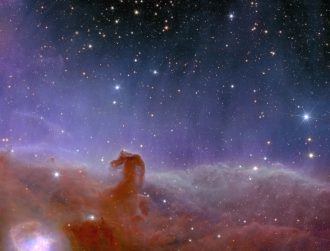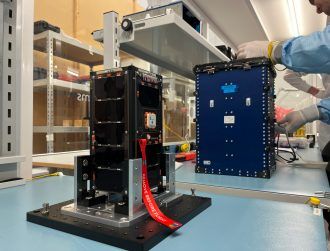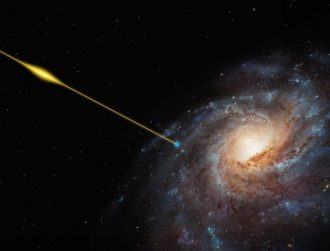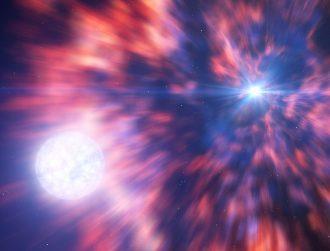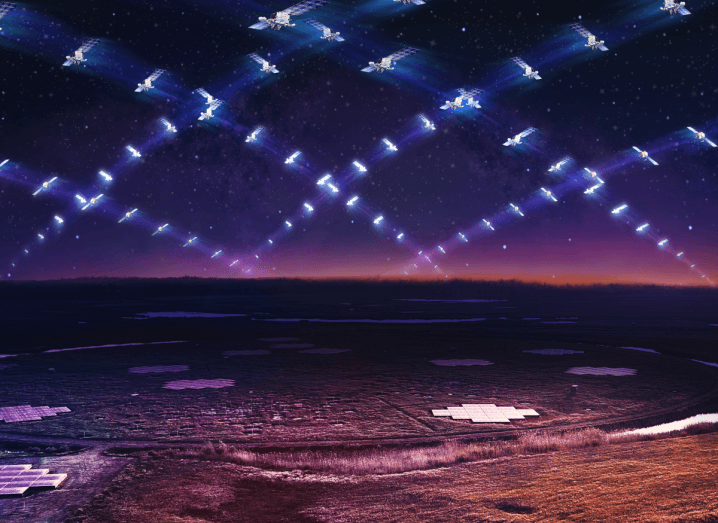
Artist’s impression of a large satellite constellation in low Earth orbit circling above the LOFAR telescope. Image: Daniëlle Futselaar/IAU
A new study has found that electromagnetic radiation from satellites such as Starlink hampers astronomers’ attempts to study radio waves in outer space.
SpaceX has made significant contributions to recent space exploration projects and astronomical research studies, most recently with the launch of Europe’s Euclid telescope. However, a recent international study has found that SpaceX’s Starlink satellites are emanating “unintended electromagnetic radiation” that has a detrimental effect on the field of radio astronomy.
Lead author Federico Di Vruno said that while astronomers have previously theorised about this kind of radiation, latest observations “confirm it is measurable”.
“This study represents the latest effort to better understand satellite constellations’ impact on radio astronomy,” said Di Vruno, co-director of the International Astronomical Union’s Centre for the Protection of the Dark and Quiet Sky from Satellite Constellation Interference (IAU CPS).
The team of scientists, all members of CPS, used the Low Frequency Array (LOFAR) telescope in the Netherlands to observe low-frequency waves from 68 Starlink satellites made by SpaceX.
Electromagnetic radiation is different from communications transmissions, which had been the primary focus for radio astronomers so far because of their ability to outshine astrophysical sources. Now, new non-communication sources add further complexity to the issue.
‘Absence of clear regulation’
Co-author Cees Bassa from the Netherlands Institute for Radio Astronomy said that the team detected radiation between 110 and 188MHz from 47 out of the 68 Starlink satellites.
“This frequency range includes a protected band between 150.05 and 153 MHz specifically allocated to radio astronomy by the International Telecommunications Union,” Bassa explained.
But SpaceX is technically not violating any rules because satellites such as Starlink are not covered by any international regulations, Bassa notes. This contrasts with terrestrial equipment, which is regulated by strict rules to prevent interferences between nearby devices.
“Our simulations show that the larger the constellation, the more important this effect becomes as the radiation from all the satellites adds up,” added co-author Benjamin Winkel of the Max Planck Institute for Radio Astronomy in Germany.
“This makes us worried not only about the existing constellations but even more about the planned ones – and also about the absence of clear regulation that protects the radio astronomy bands from unintended radiation.”
It is important to note that SpaceX is not the only company whose satellites emanate electromagnetic radiation. Starlink satellites were chosen as the subject of this study because of their widespread availability, but other large satellite constellations are also likely culpable.
The authors of the study, published in Astronomy & Astrophysics, are now in “close contact” with SpaceX, which has already introduced changes to its next generation of satellites to mitigate the impact of these unintended emissions on astronomical projects.
“We believe that the early recognition of this situation gives astronomy and large constellation operators an opportunity to work together on technical mitigations proactively, in parallel to the necessary discussions to develop suitable regulations,” added co-author Gyula Józsa.
10 things you need to know direct to your inbox every weekday. Sign up for the Daily Brief, Silicon Republic’s digest of essential sci-tech news.

